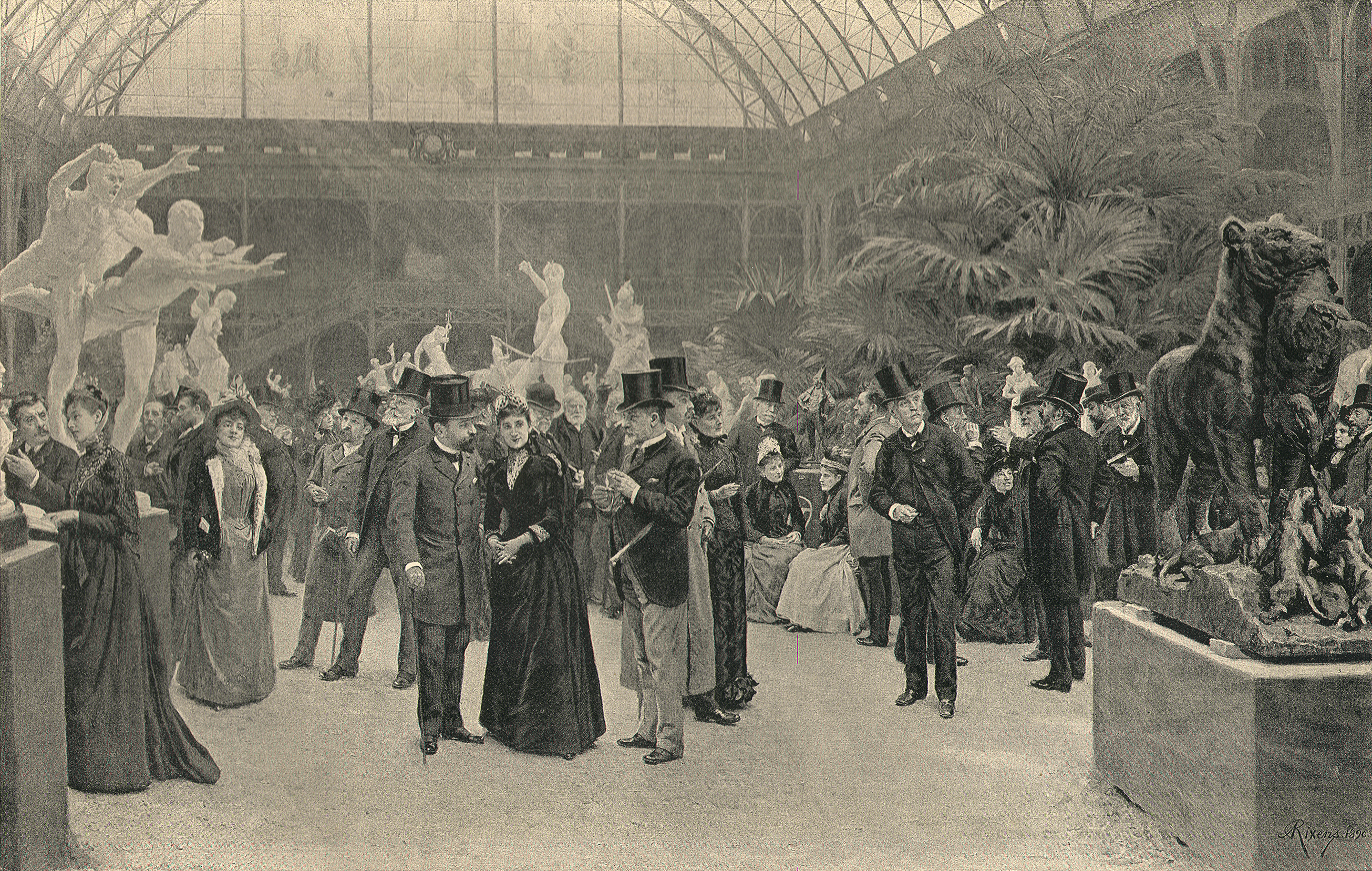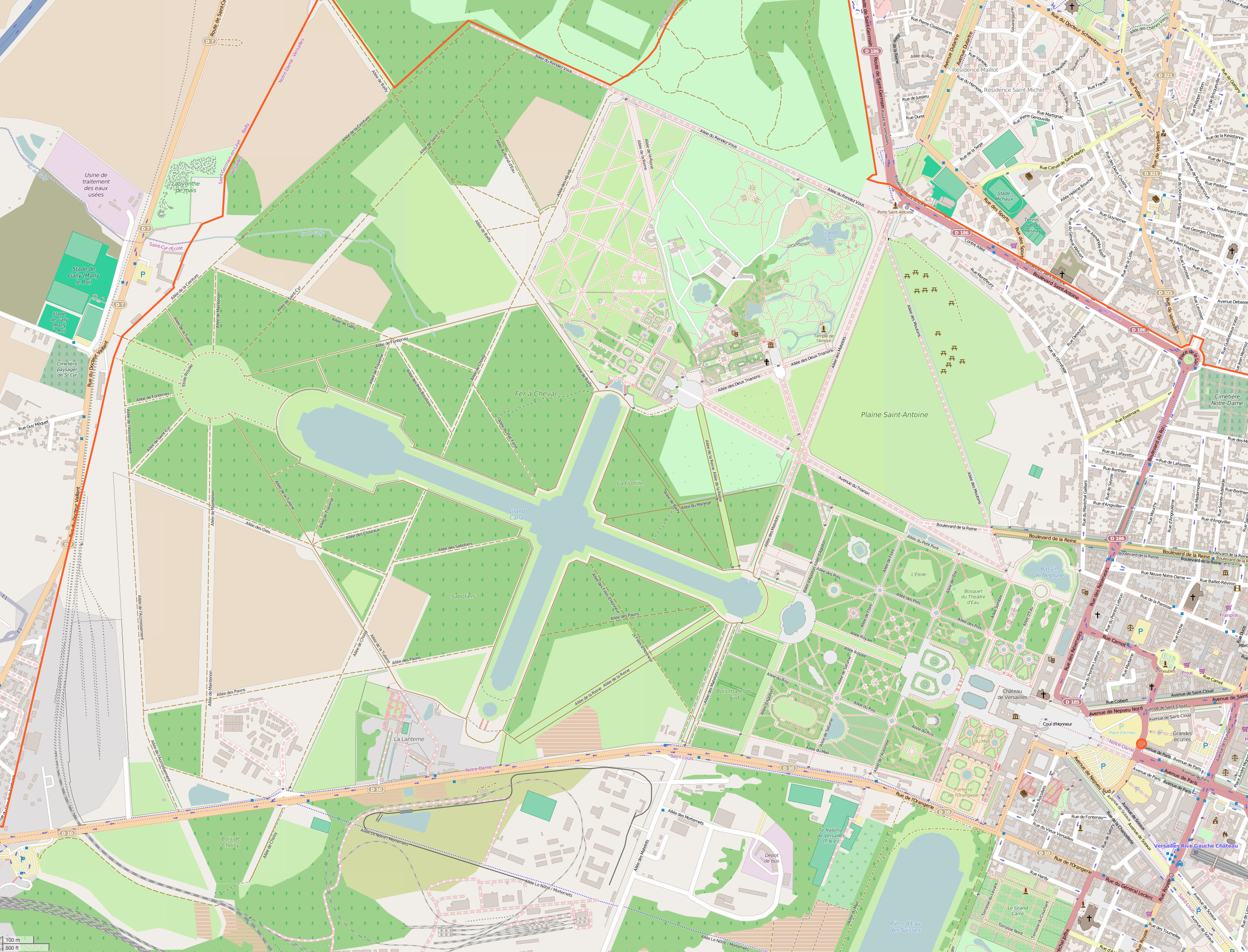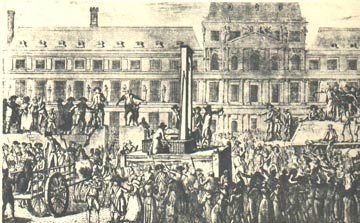|
Edmé Bouchardon
Edmé Bouchardon (; 29 May 169827 July 1762) was a French sculptor best known for his neoclassical statues in the gardens of the Palace of Versailles, his medals, his equestrian statue of Louis XV of France for the Place de la Concorde (destroyed during the French Revolution); and for the Fountain of Four Seasons in Paris. He was also a draftsman and painter, and made celebrated series of engravings of working-class Parisians.''Le Petit Robert des Noms Propres'', Paris (2010) Biography Bouchardon was born in Chaumont-en-Bassigny, the son of a sculptor and architect, Jean-Baptiste Bouchardon. He learned sculpture first in the studio of his father, and then with Guillaume Coustou. He won the Prix de Rome of the Académie royale de peinture et de sculpture in 1722, and as a consequence lived and worked in Rome from 1722 to 1732. He resisted the more ornate tendencies of the Rocaille style, and moved toward neoclassicism. While in Rome, he specialized in busts of disting ... [...More Info...] [...Related Items...] OR: [Wikipedia] [Google] [Baidu] |
François-Hubert Drouais
François-Hubert Drouais (; Paris, 14 December 1727 – Paris, 21 October 1775) was a leading French portrait painter during the latter years of Louis XV's reign. His clientele included the French royal family and nobility, foreign aristocracy, fermiers-généraux (tax farmers), and the wealthier members of Parisian society and their favourites. But it was his increasing popularity at the French court that expanded his clientele and made his portraits a fashionable necessity. Drouais's work was admired during his lifetime, and his popularity and clientele did not diminish from the occasional adverse judgement published in Salon reviews. Drouais was apprenticed successively to his father Hubert Drouais, Donat Nonnotte, Charles-André van Loo, Charles-Joseph Natoire, and François Boucher. He was received into the Académie royale in 1758 with his ''morceaux des réception'' portraits of the celebrated sculptors Edme Bouchardon (1698–1762) and Guillaume II Coustou (1716–77 ... [...More Info...] [...Related Items...] OR: [Wikipedia] [Google] [Baidu] |
Académie Royale De Peinture Et De Sculpture
The Académie royale de peinture et de sculpture (; ) was founded in 1648 in Paris, France. It was the premier art institution of France during the latter part of the Ancien Régime until it was abolished in 1793 during the French Revolution. It included most of the important painters and sculptors, maintained almost total control of teaching and exhibitions, and afforded its members preference in royal commissions. Founding In the 1640s, France's artistic life was still based on the medieval system of guilds like the Académie de Saint-Luc which had a tight grip on the professional lives of artists and artisans alike. Some artists had managed to get exemptions but these were based on favoritism rather than merit. According to the 17th century ''Mémoires'' about the founding of the ''Académie royale'', a few "superior men" who were "real artists", suffered and felt humiliated under the guild system. In view of increasing pressure by the Parisian guilds for painters and s ... [...More Info...] [...Related Items...] OR: [Wikipedia] [Google] [Baidu] |
Sagrestia Nuova
The Sagrestia Nuova, also known as the New Sacristy and the Medici Chapel, is a mausoleum that stands as a testament to the grandeur and artistic vision of the Medici family. Constructed in 1520, the mausoleum was designed by the Italian artist and architect Michelangelo. Situated adjacent to the Basilica of San Lorenzo, Florence, Basilica di San Lorenzo in Florence, Italy, the Sagrestia Nuova forms an integral part of the museum complex known as the Medici Chapels. History Background The death of two scions of the Medici family, Giuliano de' Medici, Duke of Nemours (in 1516), and Lorenzo de' Medici, Duke of Urbino (in 1519), had deeply embittered Pope Leo X, the brother of Giuliano and uncle of Lorenzo, who wanted to ensure that they obtained a princely burial. It was also suggested by their cousin Pope Clement VII, Cardinal Giulio de' Medici (later Pope Clement VII), commissioning Michelangelo's project for the façade for Basilica di San Lorenzo (Florence), Basilica di San L ... [...More Info...] [...Related Items...] OR: [Wikipedia] [Google] [Baidu] |
Michelangelo
Michelangelo di Lodovico Buonarroti Simoni (6March 147518February 1564), known mononymously as Michelangelo, was an Italian sculptor, painter, architect, and poet of the High Renaissance. Born in the Republic of Florence, his work was inspired by models from classical antiquity and had a lasting influence on Western art. Michelangelo's creative abilities and mastery in a range of artistic arenas define him as an archetypal Renaissance man, along with his rival and elder contemporary, Leonardo da Vinci. Given the sheer volume of surviving correspondence, sketches, and reminiscences, Michelangelo is one of the best-documented artists of the 16th century. He was lauded by contemporary biographers as the most accomplished artist of his era. Michelangelo achieved fame early. Two of his best-known works, the ''Pietà (Michelangelo), Pietà'' and ''David (Michelangelo), David'', were sculpted before the age of 30. Although he did not consider himself a painter, Michelangelo created ... [...More Info...] [...Related Items...] OR: [Wikipedia] [Google] [Baidu] |
French Livre
The livre (abbreviation: Pound sign, £ or Livre tournois, ₶., French language, French for (pound)) was the currency of Kingdom of France and its predecessor states of Francia and West Francia from 781 to 1794. Several different livres existed, some concurrently. The livre was the name of coins and of units of account. History Origin and etymology The livre was established by Charlemagne as a unit of account equal to one Pound (mass), pound of silver. It was subdivided into 20 ''French sol, sous'' (also ''sols''), each sou equalling 12 ''French denier, deniers''. The word ''livre'' came from the Latin word ''Ancient Roman units of measurement#Weight, libra'', a Roman unit of weight and still the name of a Pound (mass), pound in modern French, and the denier comes from the Roman denarius. This system and the denier itself served as the model for many of Europe's currencies, including the British pound, Italian lira, Spanish dinero and the Portuguese dinheiro. This first l ... [...More Info...] [...Related Items...] OR: [Wikipedia] [Google] [Baidu] |
Salon (Paris)
The Salon (), or rarely Paris Salon (French: ''Salon de Paris'' ), beginning in 1667 was the official art exhibition of the in Paris. Between 1748 and 1890 it was arguably the greatest annual or biennial art event in the Western world. At the Salon of 1761, thirty-three painters, nine sculptors, and eleven engravers contributed. Levey, Michael. (1993) ''Painting and sculpture in France 1700–1789''. New Haven: Yale University Press, p. 3. From 1881 onward, it was managed by the Société des Artistes Français. Origins In 1667, the royally sanctioned French institution of art patronage, the (a division of the Académie des beaux-arts), held its first semi-public art exhibit at the Salon Carré. The Salon's original focus was the display of the work of recent graduates of the École des Beaux-Arts, which was created by Cardinal Mazarin, chief minister of France, in 1648. Exhibition at the Salon de Paris was essential for any artist to achieve success in France for at l ... [...More Info...] [...Related Items...] OR: [Wikipedia] [Google] [Baidu] |
Cupid
In classical mythology, Cupid ( , meaning "passionate desire") is the god of desire, erotic love, attraction and affection. He is often portrayed as the son of the love goddess Venus and the god of war Mars. He is also known as Amor (Latin: ', "love"). His Greek counterpart is Eros.''Larousse Desk Reference Encyclopedia'', The Book People, Haydock, 1995, p. 215. Although Eros is generally portrayed as a slender winged youth in Classical Greek art, during the Hellenistic period, he was increasingly portrayed as a chubby boy. During this time, his iconography acquired the bow and arrow that represent his source of power: a person, or even a deity, who is shot by Cupid's arrow is filled with uncontrollable desire. In myths, Cupid is a minor character who serves mostly to set the plot in motion. He is a main character only in the tale of Cupid and Psyche, when wounded by his own weapons, he experiences the ordeal of love. Although other extended stories are not told about hi ... [...More Info...] [...Related Items...] OR: [Wikipedia] [Google] [Baidu] |
Proteus
In Greek mythology, Proteus ( ; ) is an early prophetic sea god or god of rivers and oceanic bodies of water, one of several deities whom Homer calls the "Old Man of the Sea" (''hálios gérôn''). Some who ascribe a specific domain to Proteus call him the god of "elusive sea change", which suggests the changeable nature of the sea or the liquid quality of water. He can foretell the future, but, in a mytheme familiar to several cultures, will change his shape to avoid doing so; he answers only to those who are capable of capturing him. From this feature of Proteus comes the adjective protean, meaning "versatile", "mutable", or "capable of assuming many forms". "Protean" has positive connotations of flexibility, versatility and adaptability. Name origin Proteus's name suggests the "first" (from Greek language, Greek "" , "first"), as () is the "primordial" or the "firstborn". It is not certain to what this refers, but in myths where he is the son of Poseidon, it possibly refe ... [...More Info...] [...Related Items...] OR: [Wikipedia] [Google] [Baidu] |
Gardens Of Versailles
The Gardens of Versailles ( ) occupy part of what was once the ''Domaine royal de Versailles'', the royal demesne of the Palace of Versailles, château of Versailles. Situated to the west of the Palace of Versailles, palace, the gardens cover some of land, much of which is landscaped in the classic French formal garden style perfected here by André Le Nôtre. Beyond the surrounding belt of woodland, the gardens are bordered by the urban areas of Versailles (city), Versailles to the east and Le Chesnay to the north-east, by the National Arboretum de Chèvreloup to the north, the Versailles plain (a protected wildlife preserve) to the west, and by the Satory Forest to the south. Administered by the Public Establishment of the Palace, Museum and National Estate of Versailles, an autonomous public entity operating under the aegis of the Ministry of Culture (France), French Ministry of Culture, the gardens are now one of the most visited public sites in France, receiving more than s ... [...More Info...] [...Related Items...] OR: [Wikipedia] [Google] [Baidu] |
Parc Monceau
Parc Monceau (; English: Monceau Park) is a public park situated in the 8th arrondissement of Paris, France, at the junction of the Boulevard de Courcelles, Rue de Prony and Rue Georges Berger. At the main entrance is a rotunda. The park covers an area of . History The Folly of the Duke of Chartres The park was established by Phillippe d'Orléans, Duke of Chartres, a cousin of King Louis XVI, fabulously wealthy, and active in court politics and society. In 1769 he had begun purchasing the land where the park is located. In 1778, he decided to create a public park, and employed the writer and painter Louis Carrogis Carmontelle to design the gardens. The Duke was a close friend of the Prince of Wales, later George IV, and a lover of all things English. His intention was to create what was then called an Anglo-Chinese or English garden, on the earlier model of Stowe House in England (1730–1738), with its examples of the architectural folly, or fantastic reconstructio ... [...More Info...] [...Related Items...] OR: [Wikipedia] [Google] [Baidu] |
Louis Philippe II, Duke Of Orléans
Louis Philippe II, Duke of Orléans (Louis Philippe Joseph; 13 April 17476 November 1793), was a French Prince of the Blood who supported the French Revolution. Louis Philippe II was born at the to Louis Philippe I, Duke of Orléans, Louis Philippe I, Duke of Chartres, and his wife, Louise Henriette de Bourbon, Louise Henriette de Bourbon-Conti. He was titled Duke of Montpensier at birth. When his grandfather Louis, Duke of Orléans (1703–1752), Louis, Duke of Orléans, died in 1752, his father became the new Duke of Orléans and Louis Philippe II became Duke of Chartres. When his father died in 1785, he became Duke of Orléans and First Prince of the Blood. He was styled as Serene Highness (). In 1792, during the French Revolution, Revolution, Louis Philippe changed his name to . He was a cousin of King Louis XVI and one of the wealthiest men in France. He actively supported the Revolution of 1789, and was a strong advocate for the elimination of the present absolute monarch ... [...More Info...] [...Related Items...] OR: [Wikipedia] [Google] [Baidu] |
Palazzo Barberini
The Palazzo Barberini () is a 17th-century palace in Rome, facing the Piazza Barberini in Rione Trevi. Today, it houses the Galleria Nazionale d'Arte Antica, the main national collection of older paintings in Rome. History Around 1549 Cardinal Alessandro Sforza came into possession of the garden/vineyard of Cardinal Rodolfo Pio da Carpi on the Quirinal Hill, where the Sforza family, had a ''palazzetto'' built. The sloping, semi-urban site was purchased in 1625 from Alessandro Sforza, Duca di Segni by Maffeo Barberini, of the Barberini family, who became Pope Urban VIII. Three great architects worked to create the Palazzo, each contributing his own style and character to the building. Carlo Maderno, then at work extending the nave of St Peter's, was commissioned to enclose the Villa Sforza within a vast Renaissance block along the lines of Palazzo Farnese; however, the design quickly evolved into a precedent-setting combination of an urban seat of princely power combine ... [...More Info...] [...Related Items...] OR: [Wikipedia] [Google] [Baidu] |







